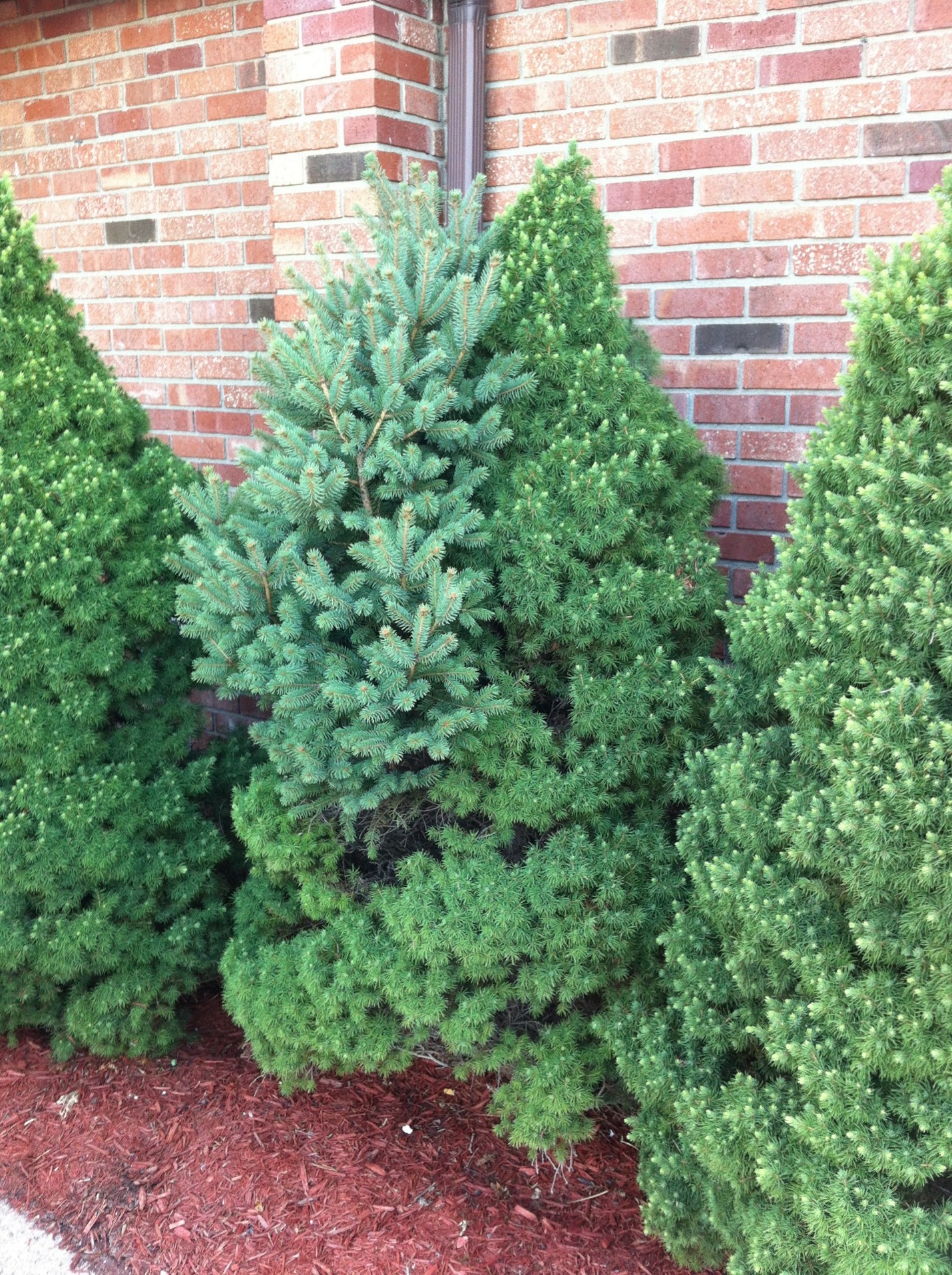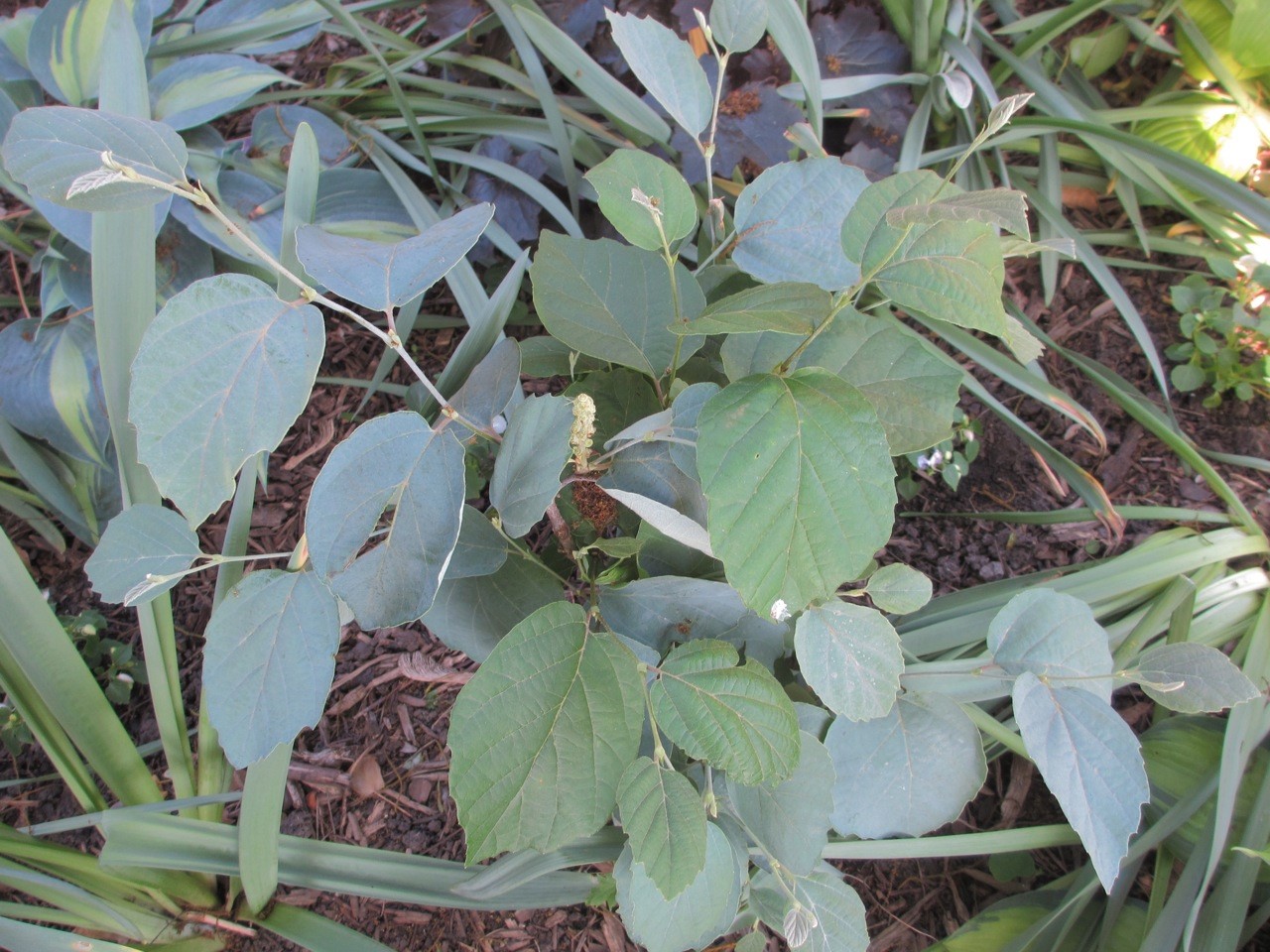Issue 3, May 26, 2022
Cultivar Reversion
Don't be alarmed, but you have mutants in your yard! What's more, they are hiding in plain sight! Many of the unique cultivars that we use in our landscapes originated from sports or mutations growing on plants with normal characteristics the species. Sports may differ by foliage shape, color, and branch structure. Breeders and growers propagate the more interesting sports, with some eventually working their way into the trade.
The mutations are not always stable, and they sometimes revert to the species' true form. Reversion is common on variegated trees and shrubs. I have seen many Tricolor European beech (Fagus sylvatica 'Purpurea Tricolor') trees develop shoots and branches with purple-green leaves characteristic of their parent.

Variegated European beech (Fagus sylvatica 'Purpurea Tricolor') with branch reverting back to purple-leaved form.

Dwarf alberta spruce Picea glauca 'conica' reverting back to back to the original species' normal form.

Fothergilla' Blue Shadow' with several branches reverting back to a green-leaved form.
At first glance, the reverted portion of the plant may seem interesting. However, reverted tissues are generally more vigorous than the other parts of the plant. If allowed to remain on the plant, reversions may eventually outgrow and overtake the desirable cultivar. Your best course of action is to prune out the reverted portion of the plant back to tissues displaying normal characteristics of cultivar.
Author:
Travis Cleveland